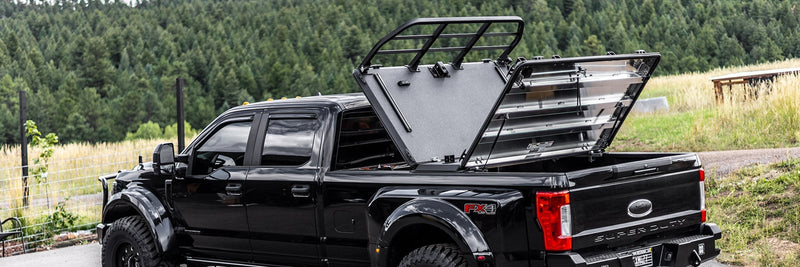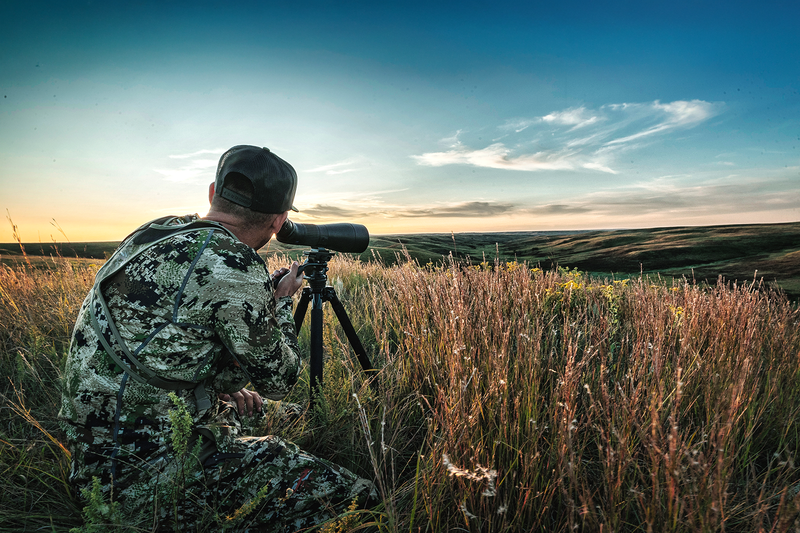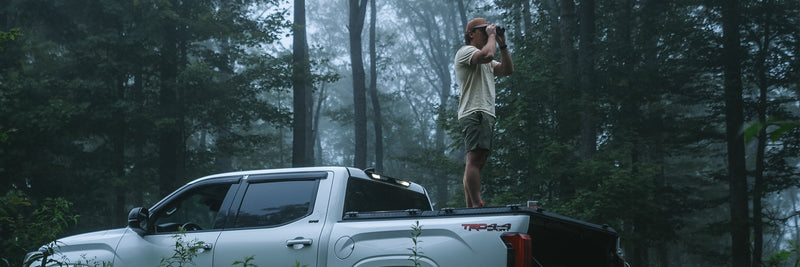Spend enough time outdoors and you’ll begin to get the impression that mother nature has it out for you. You’re not wrong. Each time we walk into the woods, we open the door to the possibility that injury, weather, or a missed trail-blaze will upend our plans, or worse. These aren’t risks to fear, they’re risks to prepare for. Your unique situation, plans, and threats should dictate your exact packing list, but the following tools will go a long way to ensuring your safety whether on a weekend hike with the family, or a solo trip off-grid. These are the Ten Essentials.

1. Navigation
You may count on your phone for day-to-day navigation, but you’ll need a more reliable option in the wilderness, something you can rely on when batteries are drained and there isn’t a cell tower in sight. When venturing into unfamiliar territory, or any time getting lost is a possibility, a topographic map and compass should travel with you. Of course, carrying them isn’t enough. You’ll need practice, and that practice shouldn’t be gained when it matters. Instead, start by doing drills, such as the 3-Leg Compass Walk, on terrain you know well. If your budget allows, you may want to add a handheld GPS unit and personal beacon to your bag, but those should be above and beyond your basics.
2. Headlamp/Flashlight
Without the ability to see what you’re doing, the rest of your gear isn’t going to do you much good. Not to mention that you’ll be limited to day-time travel. Although a flashlight will get the job done, we’d recommend a quality headlamp so you’re able to keep your hands free. You’ll discover that there are countless rechargeable and battery-powered options. Rechargeable headlamps are convenient right up until the battery craps out on you. Then you’re stuck waiting on a re-charge, if that’s even an option in the field. Most battery-powered headlamps use a few AAA batteries, so a couple sets of backup batteries won’t weigh you down.

3. Sun Protection
Without proper precaution, extended sun exposure will leave you dehydrated and energy-zapped, which is no way to spend your time outdoors. Sunblock is obvious but you shouldn’t stop there. Sunglasses, a neck gaiter, brimmed hat, and UPF-rated clothing will ensure that a sunny day won’t spoil your adventure.
4. First Aid
The further you wander, the more you need to be able to rely on yourself. That’s especially true in the area of first aid. You may end up as your own first-responder, so better prepare and train like one. There are plenty of ready-made first-aid kits available for purchase. We recommend buying one just for the bag (and the many items you’ll only need a few times), then supplementing with missing or more commonly used items like bandages, moleskin, ibuprofen, antacids, and allergy meds. Doing so will give you a kit customized to your own activities and terrain, while making you intimately familiar with the appearance and location of each item. After assembling your kit, be sure you know how to quickly and confidently use its contents. Your life, or the life of someone you love, may depend on it.

5. Knife w/ Gear Repair Kit
There are few pieces of gear you’ll use more often than a pocket knife. With just one tool, you may find yourself cutting bandages or rope one minute, and preparing food in the next. But why stop at one tool? We’d recommend a quality multi-tool. Leatherman, a fellow American manufacturer, builds many varieties that we use and like. To name a few, the Wave, Signal and Rebar offer their own unique mixes of durable and capable substitutes for many of the tools you’d pack on a car camping trip, and some that you use in daily life. You may not need all of them, but at least a couple of those tools are sure to come in handy in the wilderness. And because “The Eleven Essentials” doesn’t quite have the same ring to it, gear repair items are lumped in with the trusty knife. Your tools won’t do you any good if they’re out of order, so consider the items in your pack, and make sure you have the ability to maintain and repair them in the field. You can get started with a sewing kit, duct tape, and some paracord. Those are musts.
6. Fire
The ability to quickly build a fire is an essential skill for any outdoor adventurer. On top of providing much-needed warmth on a cold morning or after an inadvertent swim, and giving you a way to cook your day’s grub, campfires are simply nice to be around. The mood changes the minute a campfire starts blazing, and you can be their hero who starts it. Fire-starting items are almost universally small and lightweight, so pack some redundancies. Waterproof matches, a ferro rod, disposable butane lighter, and some tinder can all fit nicely in a small waterproof container so they’re dry and ready for action at a moment’s notice.

7. Emergency shelter
Despite the best intentions, weathermen sometimes miss the mark. Truth is, the weather is incredibly difficult to predict, and that’s no good considering that often, it’s the most extreme weather that surprises us. Eventually, you’ll encounter a storm that will make a speedy return to basecamp impossible. For this inevitable occasion, it’s important to keep some sort of emergency shelter on-hand. Our go-to is an ultralight tarp, suspended with paracord, paired with an emergency blanket or bivy. This setup can be erected in about a minute, and will allow you to ride out a storm in safety.
8. Extra Food
Even on day hikes, it’s a good idea to pack at least enough calories for an extra day on the trail. You just never know. Think quick grab-and-go snacks like beef jerky, granola, G.O.R.P., and energy bars. In the event that you don’t need the calories yourself, you’ll be in a position to share with someone who failed to properly prepare.

9. Extra Water
As much as 60% of the human body is made up of water. At least that’s the way it’s supposed to be. The truth is that most of us aren’t close to properly hydrated, often choosing coffee, energy drinks, and sodas as our beverages of choice. You may be able to survive that mix in the office, but it won’t cut it on the trails. It’s all-important that prior to venturing out, we account for the increased consumption of water that corresponds to our increased activity level. At moderate temps, during moderate activity, most people need a litre of water every two hours. Water’s heavy, of course, so you’ll struggle to carry enough water to last a day. Instead, use collapsible water bottles to pack as much as you can comfortably carry, then supplement with a water purification system/Lifestraw. As you move, and consume water, your pack will get lighter and lighter. At least until you refill, which should be done at every opportunity.
10. Extra Clothes
No matter what the weather looks and feels like when you’re heading out, know that things can change without warning. During the summer, these changes tend to come in the form of thunderstorms, so better pack a waterproof layer. You’ll also need to be prepared with a fleece or sweater in case the temp drops suddenly. During winter months, you’ll likely be wearing much of the clothing you’ll need. Between the clothes in your pack, and the items you’re wearing, you should always have a warm baselayer top and bottom (we prefer merino wool), an insulating jacket and hat, extra socks and underwear, and a waterproof shell and pants. In extreme cold conditions, consider including a balaclava, and always wear warm gloves.
Keep a go-bag with these items in your Cross Bin under your DiamondBack and you’ll be ready for most outdoor activities, situations, and emergencies. Depending on the environment you’re in, it may be a good idea to carefully consider how you’ll defend yourself against common threats and plan accordingly. If you’re in the tropics you can lose the cold-weather gear, but be sure to pack extra sun protection. This cannot be stated enough: plan for the specific terrain, weather conditions, and adventure that you’re facing. See you out there!


